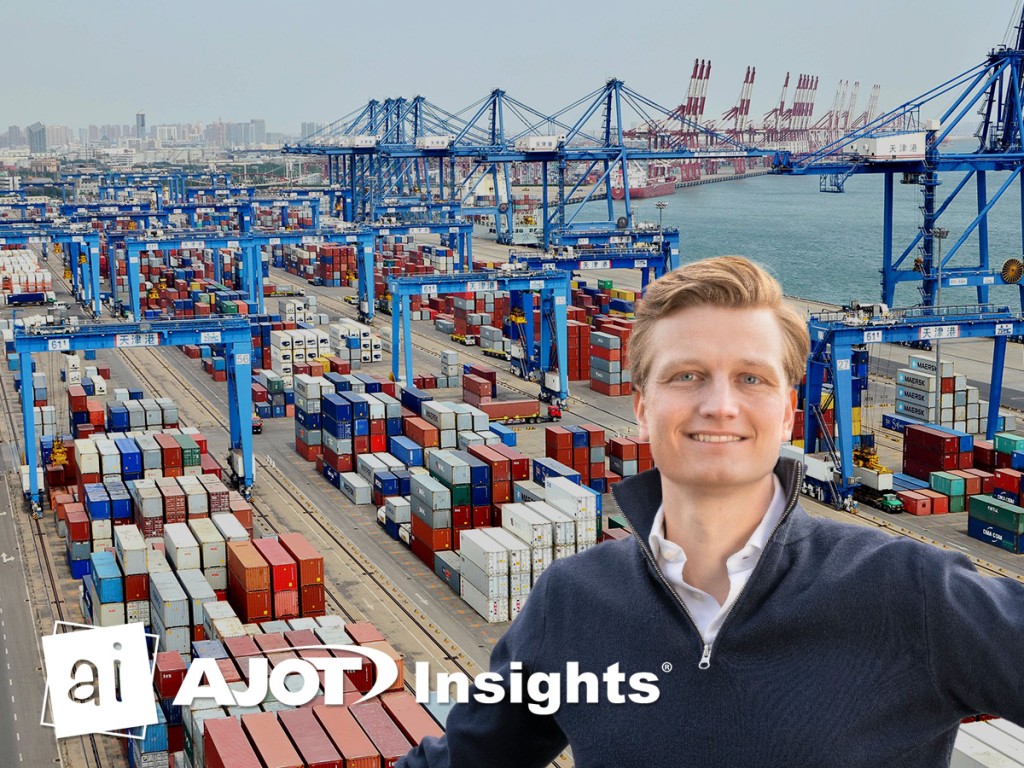Severe storm-related flooding in Northern China has disrupted operations at the Port of Tianjin and returning to normal operations may take 2-4 more weeks according to Christian Roeloffs, co-founder and CEO, Container XChange based in Hamburg.
In an interview with AJOT, Roeloffs said:
Roeloffs said “weather disruption is not just an issue … for China itself, but it should worry us all … we should do more to protect critical infrastructure and manage the risk ... That is of course why customers also use Container XChange … to manage these disruptions no matter where they come from, and how to manage them in a … more efficient way. So definitely for me, … these … questions … are on top of (my) mind. And every time there's … a disruption caused … by natural causes or natural disasters it essentially just highlights the fact … how vulnerable … our global supply chain … (is).”
The lesson is not to rely on just one set of partners, Roeloffs said:” I think … the biggest factor here is resilience, right? … Rather (you need to) have a broader network of partners and have more flexibility to also change on short notice. And again, … that's why also … we saw significant interest from customers during the pandemic to start using Container XChange. We provide a lot of flexibility and a lot of options and optionality for customers … to find new partners, work with previously unknown partners on alternative routes, et cetera, et cetera.”
Roeloffs said accumulating data can help to narrow down options in the case of a disaster: “… using more data to make better decisions. There was a big hype around track and trace of containers over the past couple of years. But in the end, just knowing where your container is … (doesn’t) really add so much value, but all the data around it makes a difference. This helps answer questions such as: ‘What's the turnaround time?’ ‘Where are congestion modes?’ ‘What's the optimal decision now, if the container is in location A and what are the transit times … to your target destination (and) what decision should you take … based on data?’ I think that's … really the sort of (situation) where value … can be seen … by the customers.”
There is value in attaching GPS tracking to containers, h says, especially high-value containers such as reefer containers but maintenance costs are high and adoption for most other containers could take years for old containers to be replaced by newer ones utilizing GPS:
“Ultimately, I think, if you really look into the future, all containers will be equipped with real-time monitoring. No … question about it. But at the moment, the technology is still too expensive and maintenance too intense … So … carriers and other equipment owners are choosing to only deploy GPS tracking on higher value priority containers. In the future, … I don't see a future without real-time container tracking.”
Finally, Roeloffs said that he is seeing a move of imports being sourced away from China and to Southeast Asia: “I think an increasing share of imports will come from alternative countries … from Southeast Asia … where … the costs to produce is now significantly cheaper than in China. That also takes time because it's not that easy to just sort of turn on production capacity … in other countries if you have already built a production footprint ... in China.”
Container XChange is a platform-based container and equipment forwarder which seeks to provide optimum solutions regardless of carrier.


